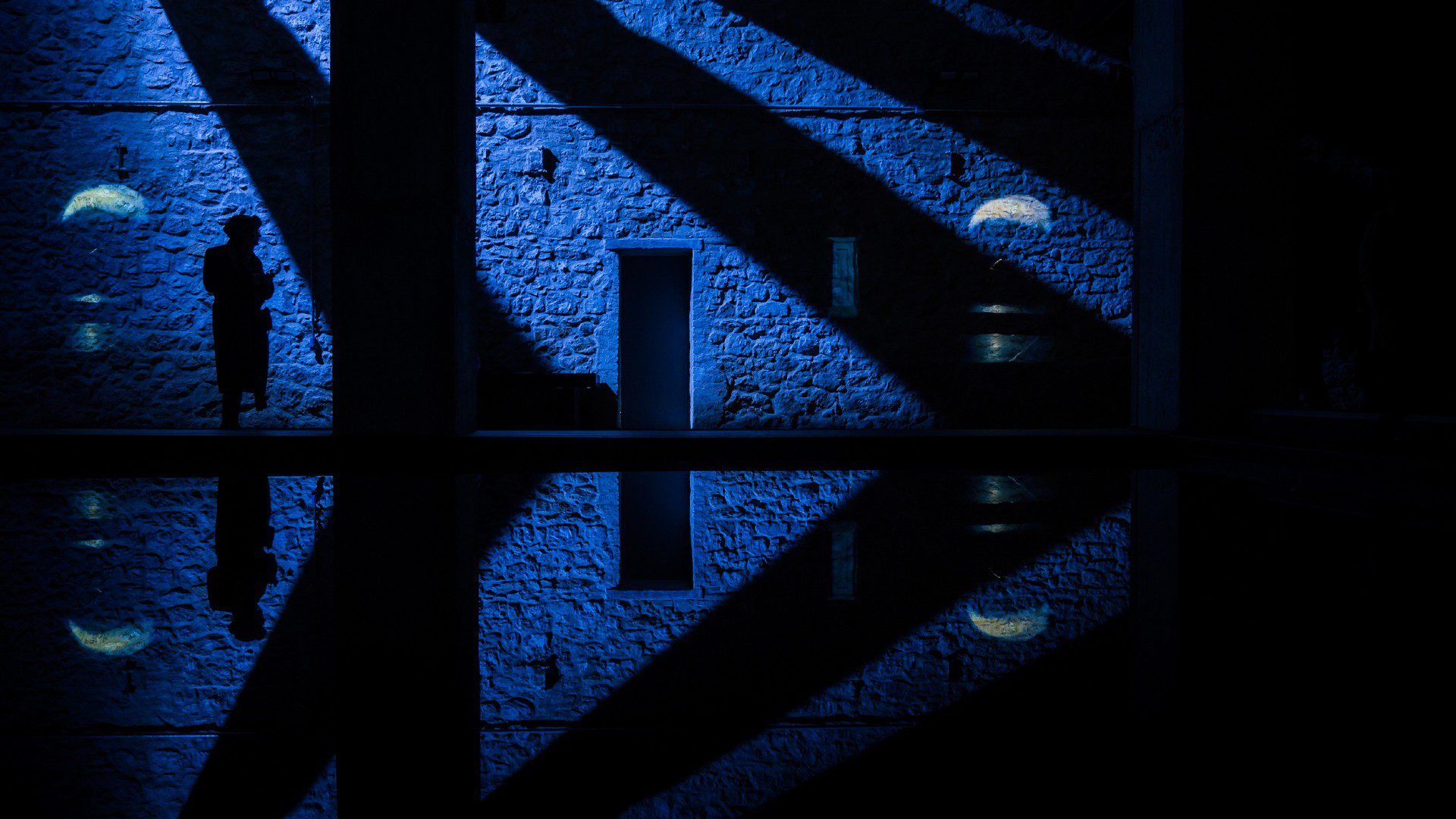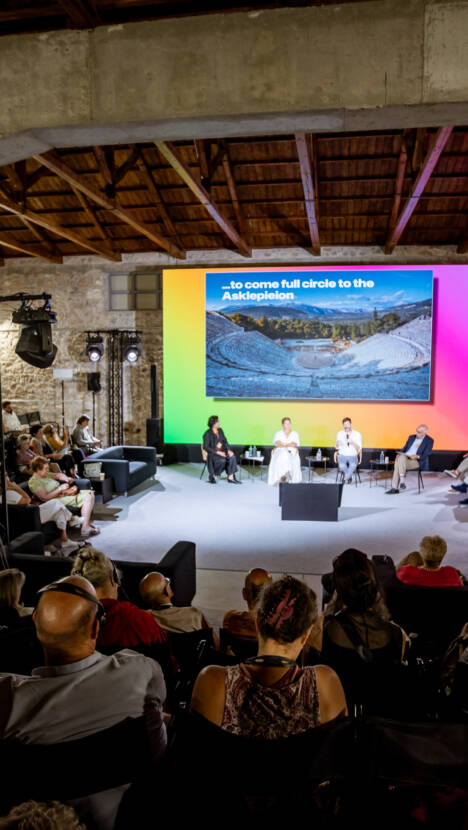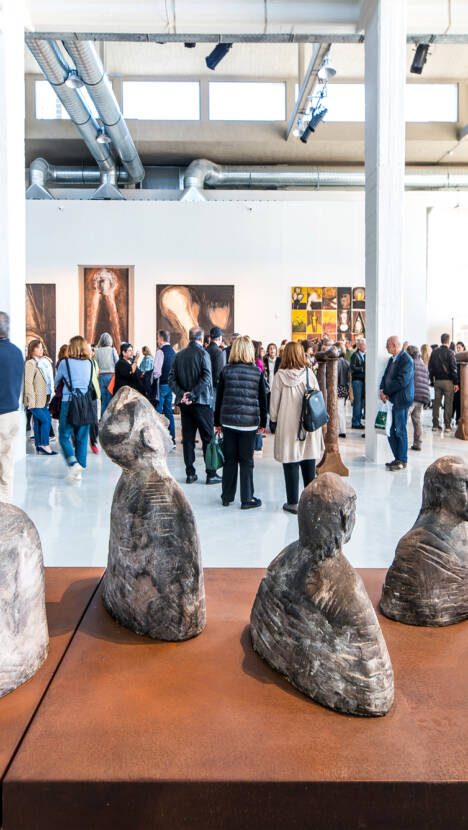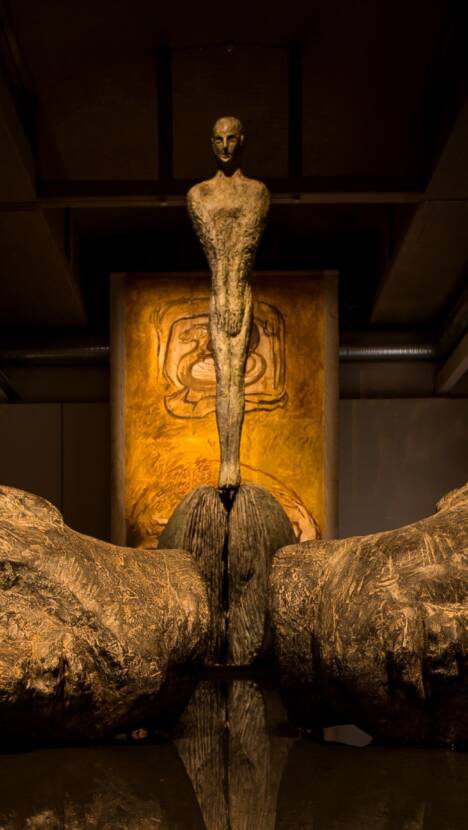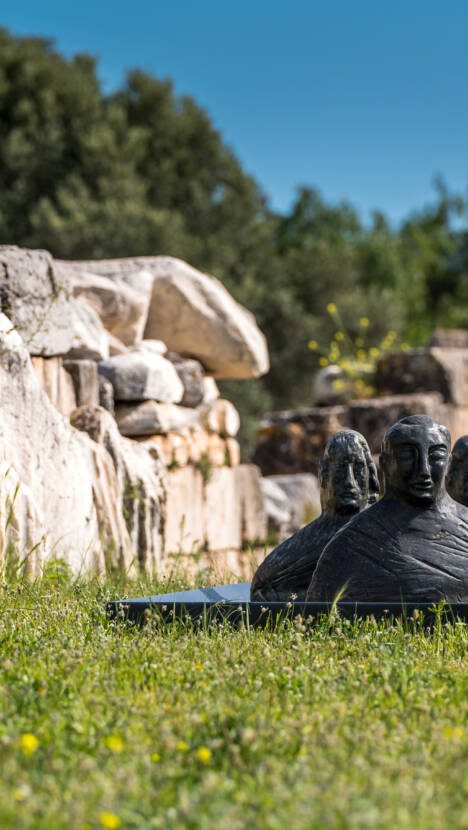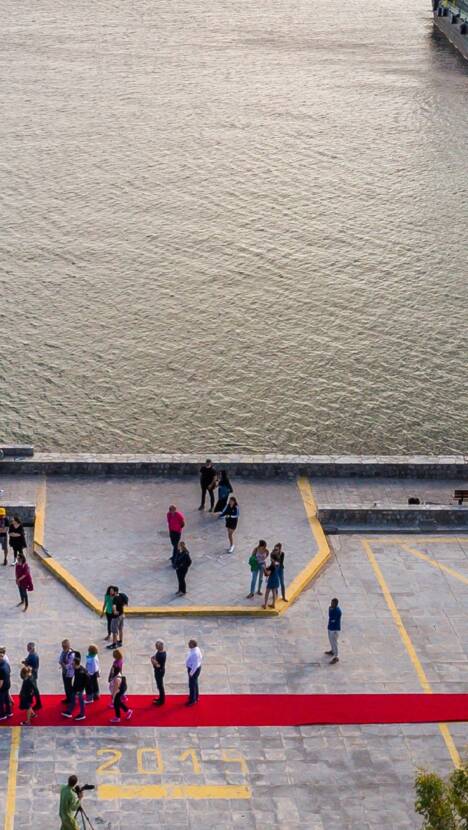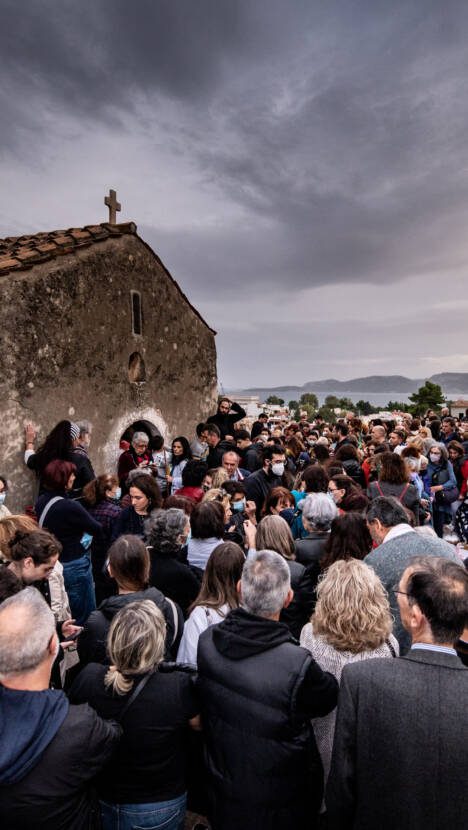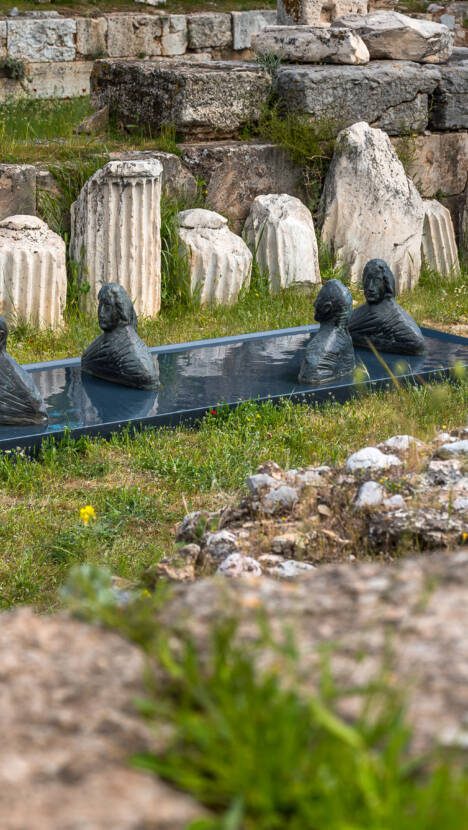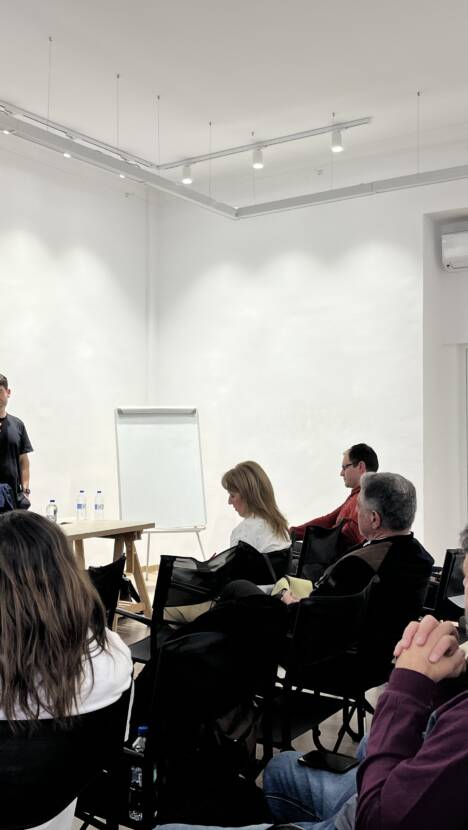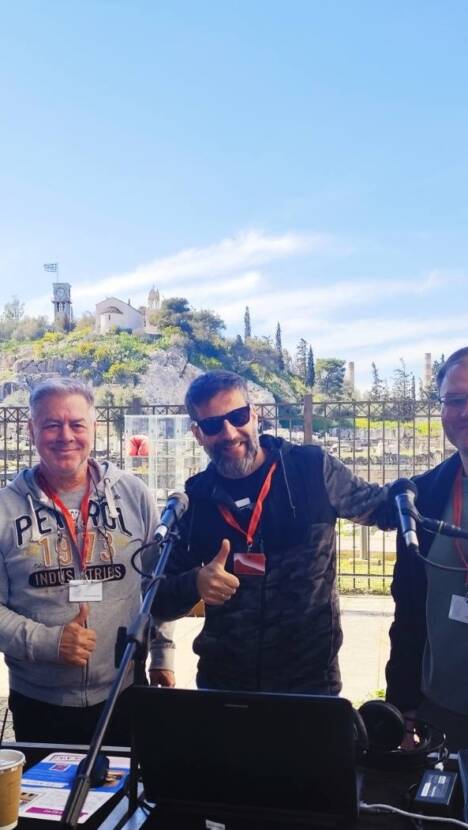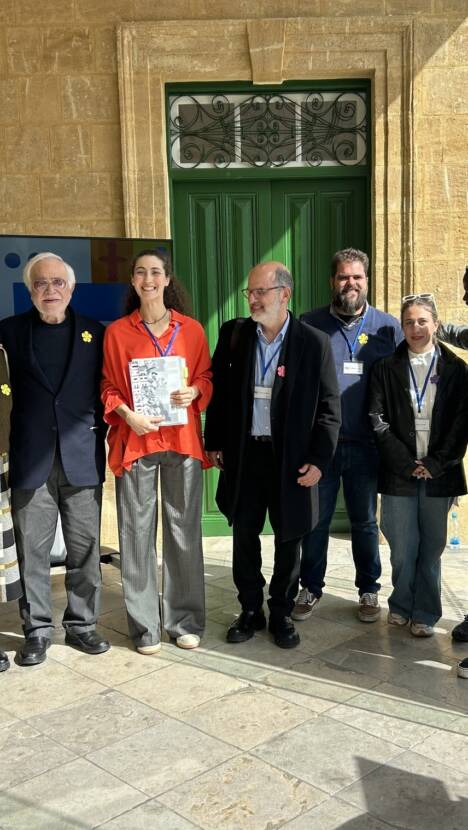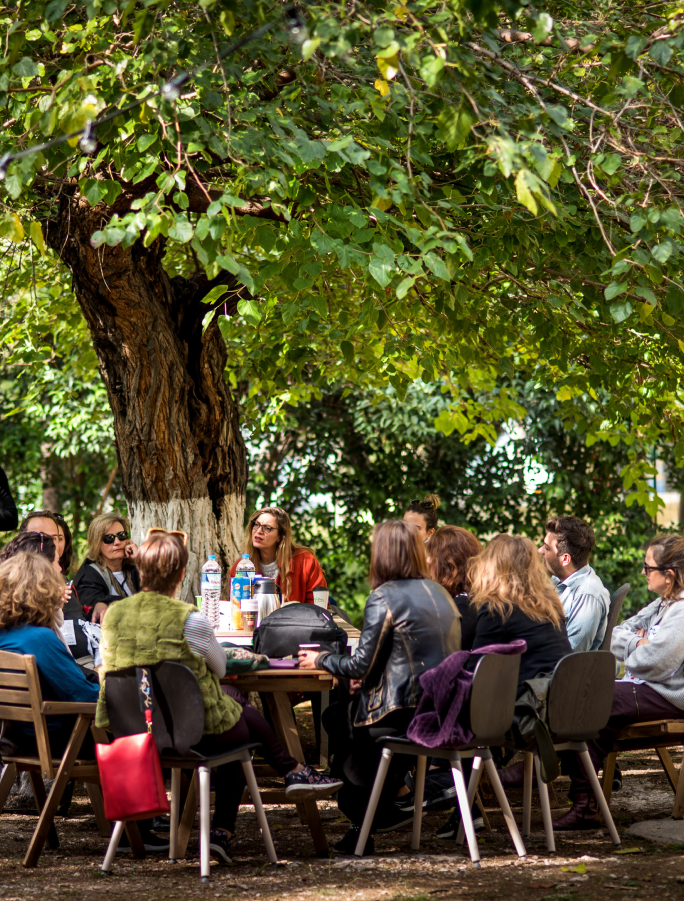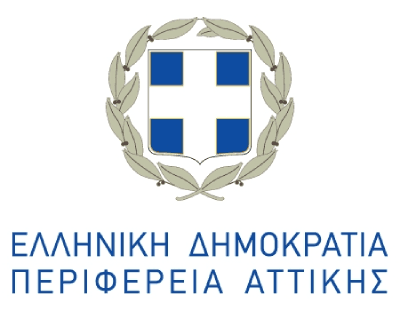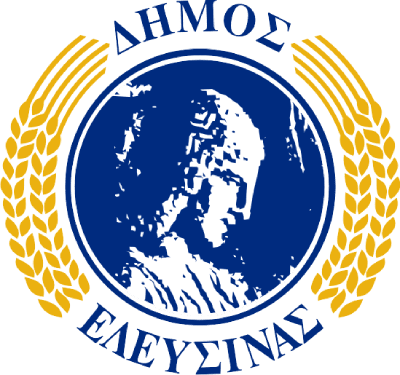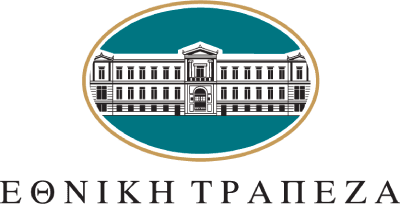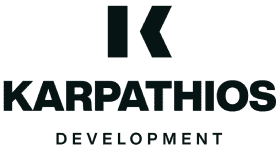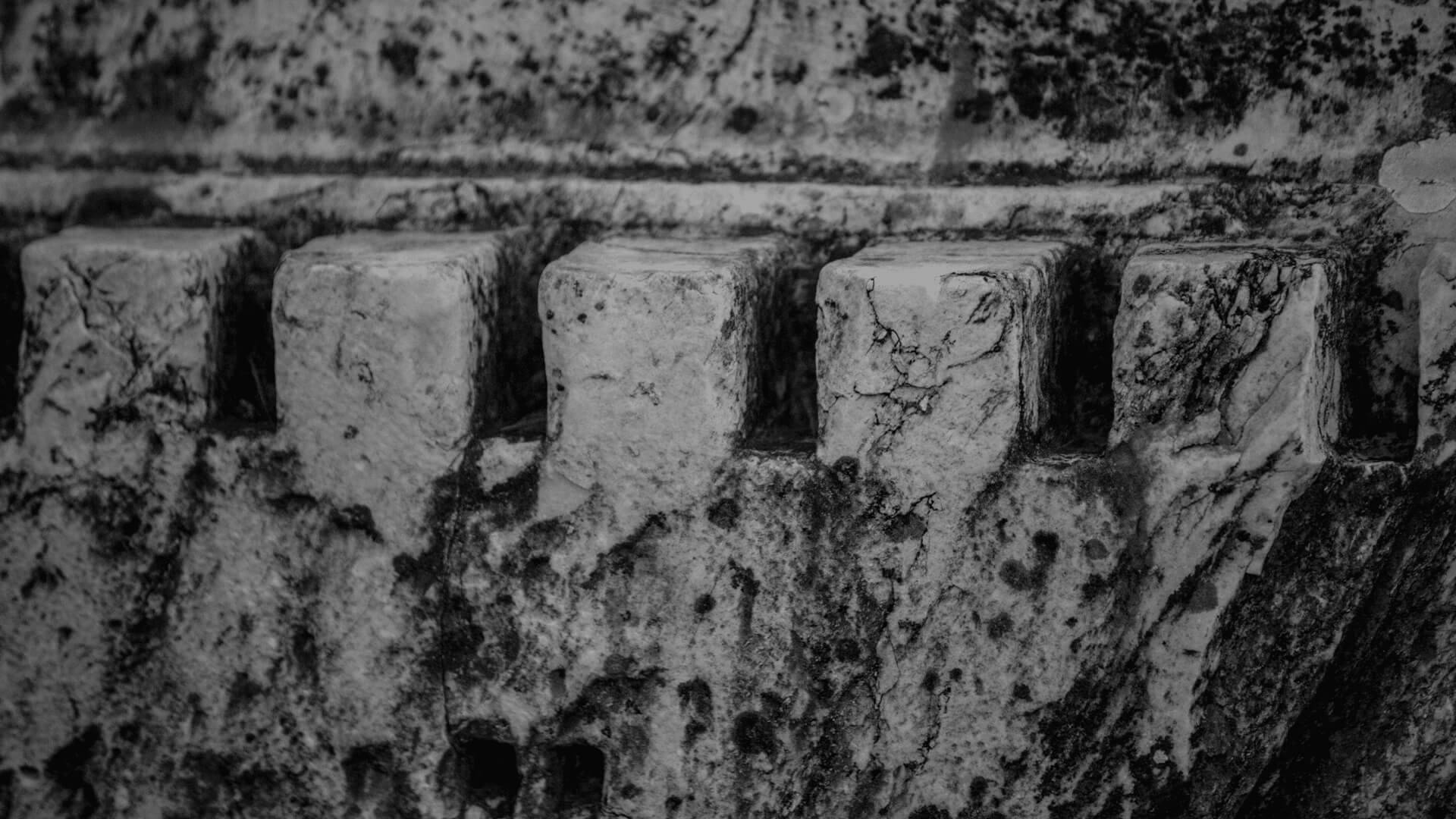
With great respect for its post-industrial history, its architecture, and its generous aesthetic, he utilises the elements of light, projection, water, and sound to turn the space into a kind of Telesterion: a secular initiation hall, openly inviting the public to discover – without hierarchy – the eloquent surfaces of the stones, the surprising reflections on the walls and ceiling, and moving images in which a group of performers are seen (literally) pulling relics of European history out from the arsenal of the past. These performers are organised in a decentralised way. Their actions are based on agreements that remain unknown but clearly follow a logic of resonances between the bodies, the objects, and sound. The high degree of attention and care each pays the other is apparent. Together, they construct a landscape that simultaneously shows a world in the ruins of dominant narratives, and the poetic power of resistance to an existing order.
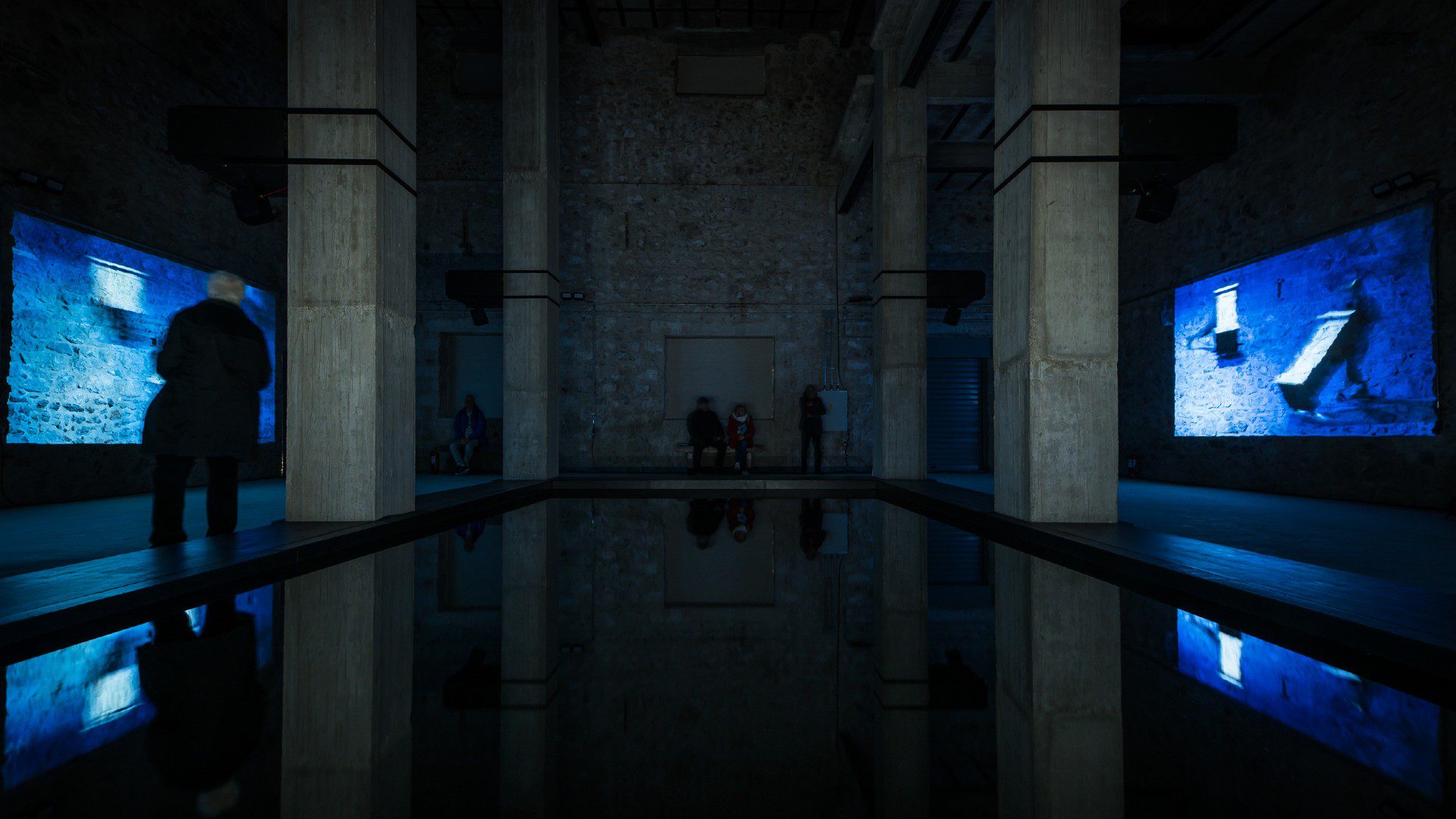
Music is heard in which delicately composed sounds cannot be attributed to well-known instruments. And voices are heard – aural documents collected in Greece during the mid-20th c entury by S amuel B aud- Bovy, an ethnomusicologist and musician renowned worldwide for the erudition of his work. A carefully composed balance between the elements – between what is seen and what is heard – allows visitors to become sovereign observers. And attentive viewers might even discover the seventh column.
